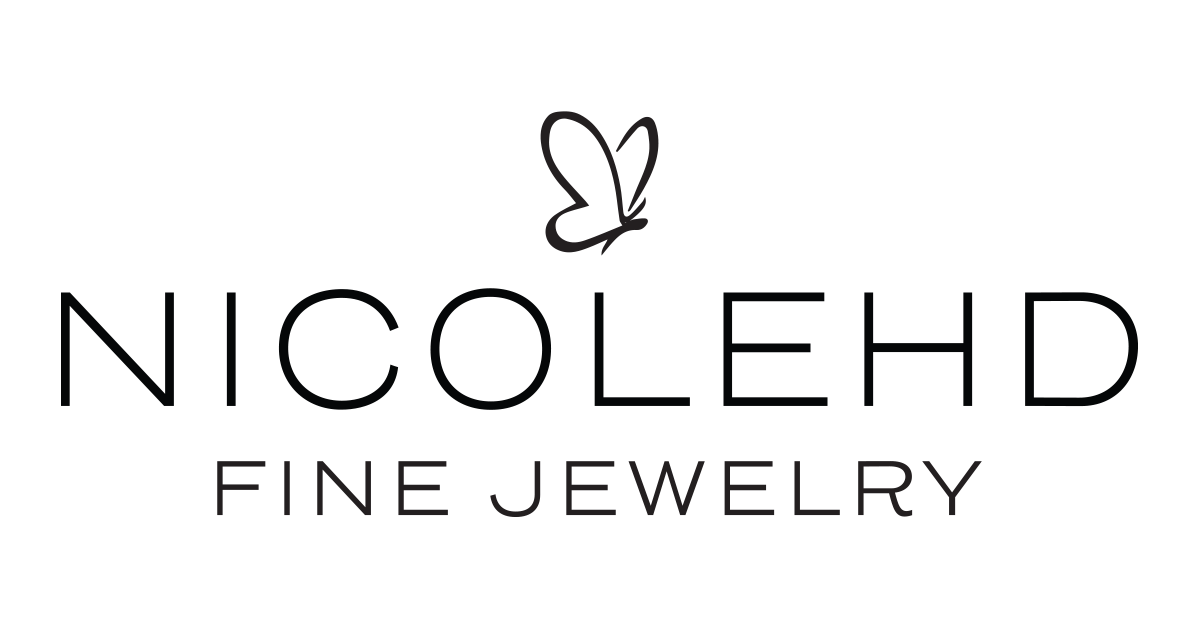A Guide to Layering Jewelry: 8 Tips for Mixing and Matching Pieces
A Guide to Layering Jewelry: 8 Tips for Mixing and Matching Pieces
Layered jewelry is the hottest trend right now among celebrities and the perfect inspiration for the modern girl. The mixed and matched look enhances any outfit and acts as the perfect accessory. Whether for a formal or casual look, layering jewelry brings a touch of cohesion to a fit.
Jewelry layering allows you to be creative while featuring some of your favorite pieces. While there are no rules to layering jewelry, many professional stylists follow these tips in order to perfect the trend and make it easy for you to do so too.

1. Focal Region
There are four primary regions for jewelry: your neck, wrists, ears, and fingers. When planning a layered look, it's best to pick one specific region to layer. This is ideal, as it doesn't make your overall look appear too busy, but instead more balanced.
Picking one region to layer doesn't mean you can't add jewelry in other areas, but you may want to limit heavy layering to one section. For example, if you choose to layer with several necklaces, you can also feature some rings and bracelets that accent those necklaces.

2. Primary Item
If you can't determine a specific region to choose from, picking a primary jewelry piece to feature is also a great starting place. This piece could be a pendant necklace or a wristwatch. It acts as the center of your jewelry, allowing you to work around it.
When choosing a primary item, you will likely also want it to make a statement. Once you have decided on your primary pieces, find smaller, dainty pieces to pair with it. The goal is to use jewelry that compliments your main layering piece, not compete against it.

3. Mixing Metals
Wearing an abundance of white gold jewelry and one or two pieces of yellow gold can be surprising to the eye and disrupt the flow of an outfit. Ideally, you should attempt to mix metals evenly, or stick to one. This way, there is cohesion between your jewelry items. Pieces with mixed metals (i.e. rose gold with gold accents) can help bridge the gap between metals. Mixing metals is also great, as it creates an interesting look among similar-looking pieces. Tying in key similarities between metals is helpful when finding out what works together. A common gemstone or pattern can make different pieces appear more uniform.

4. Matching Jewelry
Although having each piece of jewelry match can sometimes appear tacky, it can actually be extremely helpful when choosing layering pieces. Pairing pendant earrings with a matching pendant necklace creates a layered look that helps pull your outfit together.
Using similar styles in different areas is a clever way to tie a look together. You don’t need a million pieces to look great, just a few thoughtfully paired ones.

5. Adding In Color
When working with metal-based jewelry, it can be easy to get caught up in yellow and white golds. Adding in details of colored stones or beaded jewelry can add a pop of color without becoming too overwhelming. These items can also work as a centerpiece to work around with your other jewelry.

6. Tone
Jewelry pieces often convey a variety of tones. A chunky diamond-studded necklace appears more formal and is often ideal for fancy events. Meanwhile, a novelty ring featuring a dog or other character is playful and feels young. While both pieces are great for layering, they might not look the best next to each other.
Settling on one tone for your jewelry pieces will bring a cohesive look and keep you from getting carried away with mismatched items. Minimalist pieces should be paired with minimalist pieces, and hard, industrial pieces should be paired similarly.

7. Thick and Thin
Several thin pieces of jewelry can work as a great minimalist look that doesn't overpower an outfit. On the opposite end, too many chunky items can take up too much space and become distracting to the eye. Mixing thick and thin items is ideal, as it adds interesting texture and variance.

8. Experiment
The best advice while attempting to layer jewelry is just to experiment. This is the opportune moment to pull out pieces you've neglected or to feature a favorite item of yours. While it might take time to perfect a look that is effortless and chic, the final layered look will end up elevating your outfit.
Often, you’ll want to coordinate your outfit with your jewelry. Thinking of your clothing and accessories as a single statement, you’ll likely avoid clashing patterns, colors and materials. Balance is key. If you choose to wear a statement outfit, pair it with understated jewelry, and vice versa.
If you discover layering combinations that look great but don’t match your outfit or occasion, take a picture of them. You can always use these looks later.

Start Layering Jewelry Now
The trend of effortlessly wearing multiple layered jewelry pieces is easily achieved and allows you to show love to more than just one statement item. While following these tips will be helpful in planning your layered look, finding inspiration from professional jewelry lookbooks will make it even easier.
Layering jewelry is a fun, creative outlet to utilize your regular pieces and showcase who you are through them. After all, jewelry should be an extension of your personality and only enhance your appearance. Play around with the jewelry items you love and create a new look that represents you.
If you're feeling inspired, check out our collection of beautiful jewelry designs to feature in your next layered look.
 GET 15% OFF YOUR FIRST ORDER WHEN YOU SIGN UP FOR EMAILS
GET 15% OFF YOUR FIRST ORDER WHEN YOU SIGN UP FOR EMAILS












